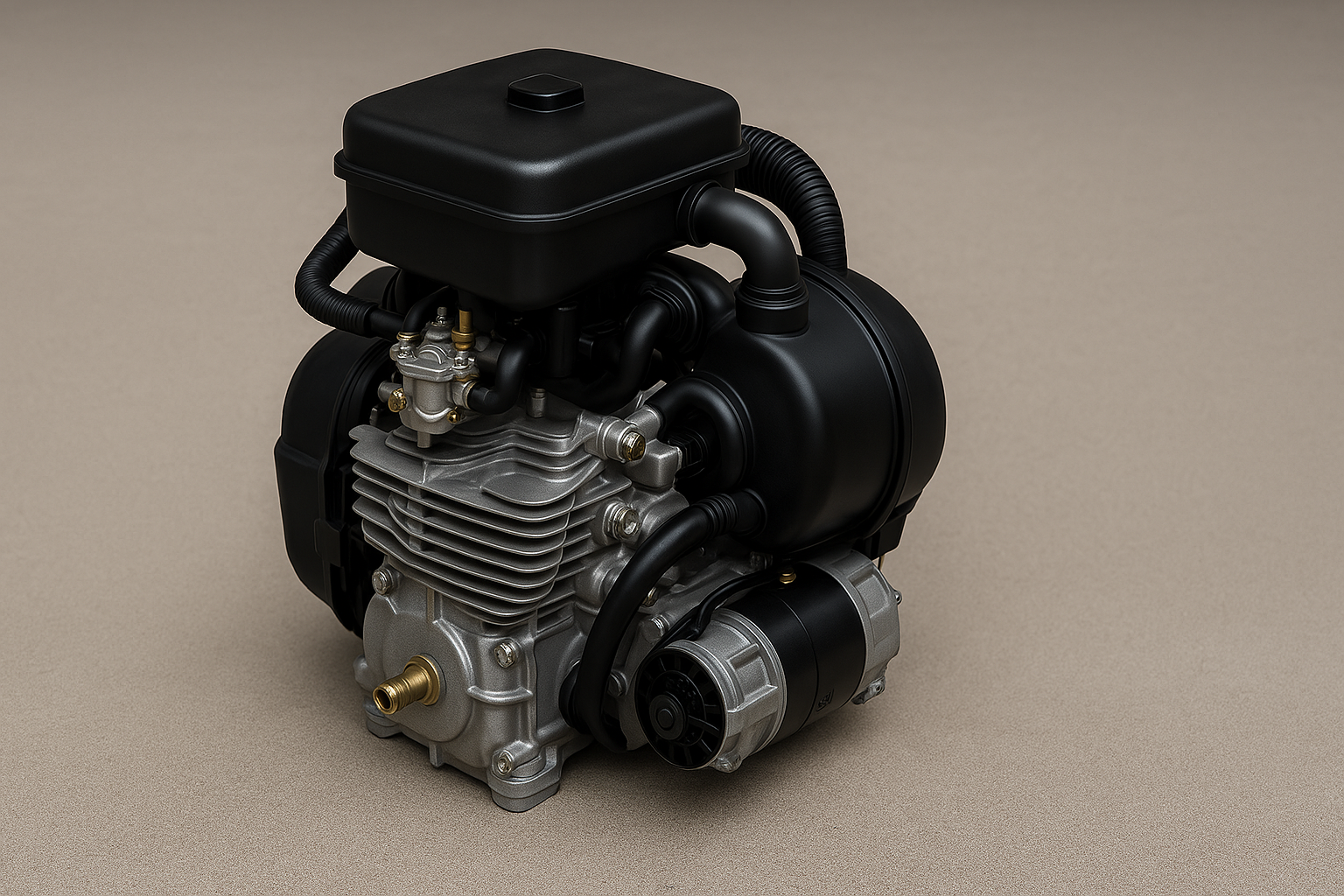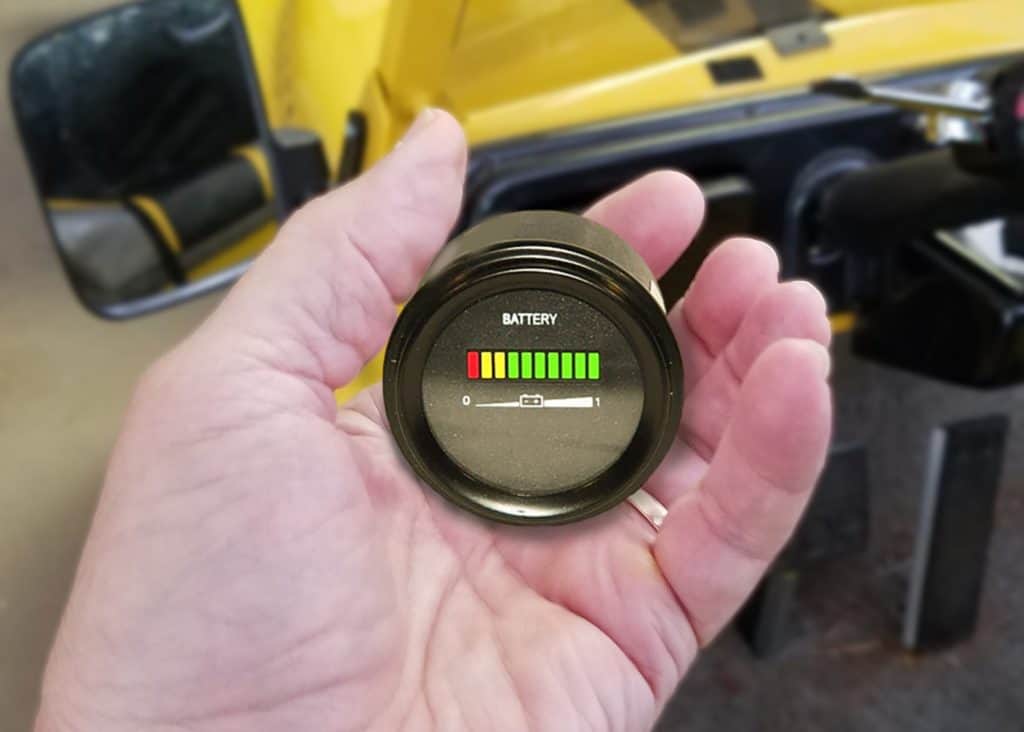Ever had that moment when your golf cart motor decides to throw a fit, leaving you stranded halfway to the 18th hole? Yeah, that sinking feeling when you turn the key, and instead of purring to life, it gives you the silent treatment. Or worse, it starts coughing and sputtering like it’s caught a cold. You’re left scratching your head, wondering, “Is it the batteries, the solenoid, or the potentiometer acting up this time?” It’s enough to make you feel like you’re trying to decode an ancient language without a Rosetta Stone.
I get it. You’re not just frustrated; you’re worried. That golf cart isn’t just a vehicle; it’s your buddy on the green, your partner in crime. And when it’s down, it feels like a part of your golfing soul is too. You’re thinking, “All I wanted was a smooth ride, is that too much to ask?”
But here’s the good news: those quirky behaviors – the sluggish starts, the unexpected stops, the overall moodiness? They’re not random. They’re signs, clear as day, that your golf cart is begging for a bit of TLC. And you, my friend, are more than capable of giving it just that.
So, grab your toolkit and let’s dive into the 5 Tell-Tale Signs Your Golf Cart Motor Says ‘Fix Me!’ Ready to get your trusty steed back on the fairways? Let’s begin.
Key Takeaways
- Not all starting problems with your golf cart are due to the motor.
- Checking the batteries should always be the first step in troubleshooting.
- Using a multimeter to test each battery can save you time and unnecessary expenses.
- Understanding the common issues can empower you to perform simple fixes yourself.
Sign #1: The Cart Won’t Start
When you turn the key and your golf cart remains silent, it’s easy to assume the worst. The first thought might be that the motor has failed. However, jumping to this conclusion can lead to unnecessary and costly solutions.
The conventional approach has been to look at replacing or repairing the motor immediately. This is akin to deciding that the entire system is at fault without checking the basics first. Yet, more often than not, the issue lies with the batteries. They are the power source, and if they’re not functioning correctly, nothing else will.
The new method focuses on testing each battery individually with a multimeter. This is a straightforward process that can identify if any battery is not holding charge. It’s a practical first step because it addresses a common and easily fixable problem. If one battery is underperforming, it can prevent the cart from starting, much like a weak link in a chain can compromise its strength.
Some may argue that focusing on the motor is logical since it’s a central component. While the motor is undoubtedly crucial, a golf cart’s functionality hinges on its power source – the batteries. Ensuring they are in good working condition is often all that’s needed to resolve starting issues.
By prioritizing battery checks, you can often bypass the need for more complex and expensive repairs. This approach not only saves time but also empowers golf cart owners with a practical solution to a common problem.
Sign #2: Unusual Noises or Smells
Hearing strange noises or detecting odd smells coming from your golf cart can be unsettling. It’s like hearing a noise in your house at night; your first instinct might be to ignore it, hoping it goes away. However, just as with your home, these signs from your golf cart shouldn’t be disregarded.
Traditionally, the response to such symptoms might be to brush them off until the golf cart stops working entirely. This approach, though, is akin to waiting for a small leak to become a flood. By the time you’re forced to address it, the damage could be extensive and costly.
The new method involves a proactive inspection at the first sign of trouble. For noises, check the motor and wheel bearings for any signs of wear or damage. A grinding noise could indicate that the bearings are worn out, while a whining sound might suggest the motor is struggling. As for smells, a burning odor could point to overheating components or electrical issues.
Some might argue that these problems are for professionals to solve. While it’s true that complex electrical issues should be handled by experts, identifying these early warning signs can prevent more significant problems. Moreover, understanding what different noises and smells can indicate helps you communicate more effectively with repair technicians, potentially saving time and money on diagnostics.
By paying attention to and acting on these early warning signs, you can maintain your golf cart’s performance and longevity. Ignoring them, on the other hand, can lead to more severe issues down the line, turning what could have been a simple fix into a major project.
Sign #3: Reduced Speed and Acceleration
Experiencing a drop in your golf cart’s speed and acceleration can be frustrating. It’s like trying to run through water; no matter how hard you push, you just can’t seem to move at your normal pace. Often, the knee-jerk reaction is to assume the worst – that the motor is dying.
However, this symptom doesn’t always point directly to the motor. Conventional thinking might lead you to start pricing out a new motor or considering a new golf cart altogether. But this is often premature and can lead to unnecessary expenditure.
The new method looks at the solenoid and potentiometer as potential sources of the problem. These components are crucial for delivering power from the batteries to the motor and controlling speed. A faulty solenoid can interrupt power flow, and a malfunctioning potentiometer can misinterpret acceleration commands. Testing these components can often reveal simple fixes, such as replacing a solenoid or adjusting the potentiometer settings.
The counterargument here is the complexity of these components. Yes, they are more technical than checking battery voltage, but with a basic understanding and a multimeter, most golf cart owners can perform these checks themselves. This approach not only saves money but also empowers owners with a deeper understanding of their cart’s operation.
Addressing reduced speed and acceleration by examining the solenoid and potentiometer before assuming motor failure can prevent unnecessary replacements. This method underscores the importance of a systematic approach to troubleshooting, ensuring that simpler, less expensive solutions are not overlooked.
Sign #4: The Cart Stops Unexpectedly
When your golf cart halts out of the blue, it’s more than just an inconvenience; it’s a red flag that something’s amiss. Imagine you’re cruising along, enjoying your ride, and suddenly, it’s as if your cart has decided it’s had enough. The knee-jerk reaction might be to restart the cart and hope for the best, treating it as a fluke.
Conventional wisdom might suggest that such stops are just battery or motor issues, leading many to swap these out in hopes of a fix. Yet, this approach can be like using a sledgehammer to crack a nut, overlooking simpler, more nuanced solutions.
The new method zeroes in on the electrical connections and wiring. Loose or corroded connections can intermittently disrupt power, causing sudden stops. Inspecting and cleaning these connections, and ensuring they’re secure, can often resolve the issue without the need for more drastic measures. This method is superior because it targets a common yet frequently overlooked cause of unexpected stops, offering a straightforward and cost-effective solution.
Critics might argue that such maintenance is too meticulous for the average owner. However, regular checks of these components can prevent unexpected stops and extend the cart’s lifespan. It’s a small investment of time that pays off in reliability and peace of mind.
By focusing on the electrical system’s health, you can often prevent sudden stops, ensuring a smoother, more reliable ride. This proactive approach not only saves you from potential headaches on the course but also helps you avoid unnecessary expenses down the line.
Sign #5: The Motor Overheats
Noticing your golf cart motor overheating is akin to touching a stove that’s hotter than expected – it’s a clear sign something’s wrong. You might observe this after prolonged use or in the middle of a ride, and it can be tempting to just let it cool down and hope for the best.
The conventional approach to dealing with an overheating motor often involves giving the cart a break or checking if the motor itself needs replacement. While rest is essential, and sometimes a new motor is necessary, these solutions may not address the underlying issues causing the overheating in the first place.
The new method advocates for a comprehensive check of the cooling system and ventilation. Just like a computer needs a fan to keep it cool, your golf cart motor relies on proper airflow to prevent overheating. Ensuring that the motor’s ventilation system is clear of debris and functioning correctly can often solve overheating problems without the need for more drastic measures. Additionally, checking for any mechanical issues that may cause the motor to work harder than it should, such as worn bearings or misaligned parts, can prevent overheating.
Some may view this approach as unnecessary, arguing that motors are designed to handle high temperatures. However, consistently operating at high temperatures can significantly shorten the motor’s lifespan and lead to more frequent breakdowns. By maintaining the cooling system and ensuring the motor isn’t working harder than it needs to, you can extend the life of your golf cart and enjoy more reliable performance.
Addressing motor overheating by focusing on ventilation and mechanical efficiency not only solves the immediate problem but also contributes to the long-term health of your golf cart. It’s an approach that emphasizes prevention, ensuring your rides are smooth and your stops are planned, not forced by a failing motor.
Conclusion
Navigating the quirks of a golf cart that’s signaling for help doesn’t have to be a journey filled with guesswork and frustration. By tuning into the 5 Tell-Tale Signs Your Golf Cart Motor Says ‘Fix Me!’, you’re equipped to diagnose and address the most common ailments that could be plaguing your trusty ride. From the silent plea for power when the cart refuses to start, to the dramatic halts and overheats, each sign is your cart’s way of communicating its needs.
The shift from conventional, often costly fixes to more nuanced, targeted approaches not only saves you time and money but also deepens your understanding of your golf cart’s workings. It’s about fostering a relationship with your cart, where you’re attuned to its signals and capable of providing the care it needs to continue serving you on and off the course.
Remember, the key to a healthy golf cart lies in regular maintenance and a keen eye for the signs it shows. By adopting these new methods, you’re not just fixing immediate problems; you’re investing in the longevity and reliability of your golf cart. So, the next time your cart whispers (or shouts) for attention, you’ll know exactly how to respond, ensuring many more smooth rides to come.
Your golf cart is more than a vehicle; it’s a partner in your golfing adventures. Treat it with care, and it will continue to be a faithful companion, round after round.
Frequently Asked Questions
How often should I perform maintenance checks on my golf cart?
Regular maintenance, including battery checks, connection inspections, and ventilation system cleanings, should be performed every few months or according to the usage level and manufacturer’s recommendations.
What should I do if replacing the batteries doesn’t fix the starting problem?
If new batteries don’t solve the issue, inspect the solenoid and potentiometer for proper operation. These components are crucial for starting the cart and regulating its speed.
Can I fix a faulty solenoid or potentiometer myself?
Many golf cart owners can replace a solenoid or potentiometer with basic tools and a bit of research. However, if you’re uncomfortable with these repairs, seeking professional help is advisable.
What’s the best way to clean corroded battery terminals?
A solution of baking soda and water applied with a stiff brush can effectively clean corroded terminals. Ensure the golf cart is off and disconnected from any power source before cleaning.
How can I prevent my golf cart motor from overheating?
Regularly check the motor’s ventilation system for blockages and ensure all mechanical components are in good working order to prevent excessive strain.






Leave a Reply